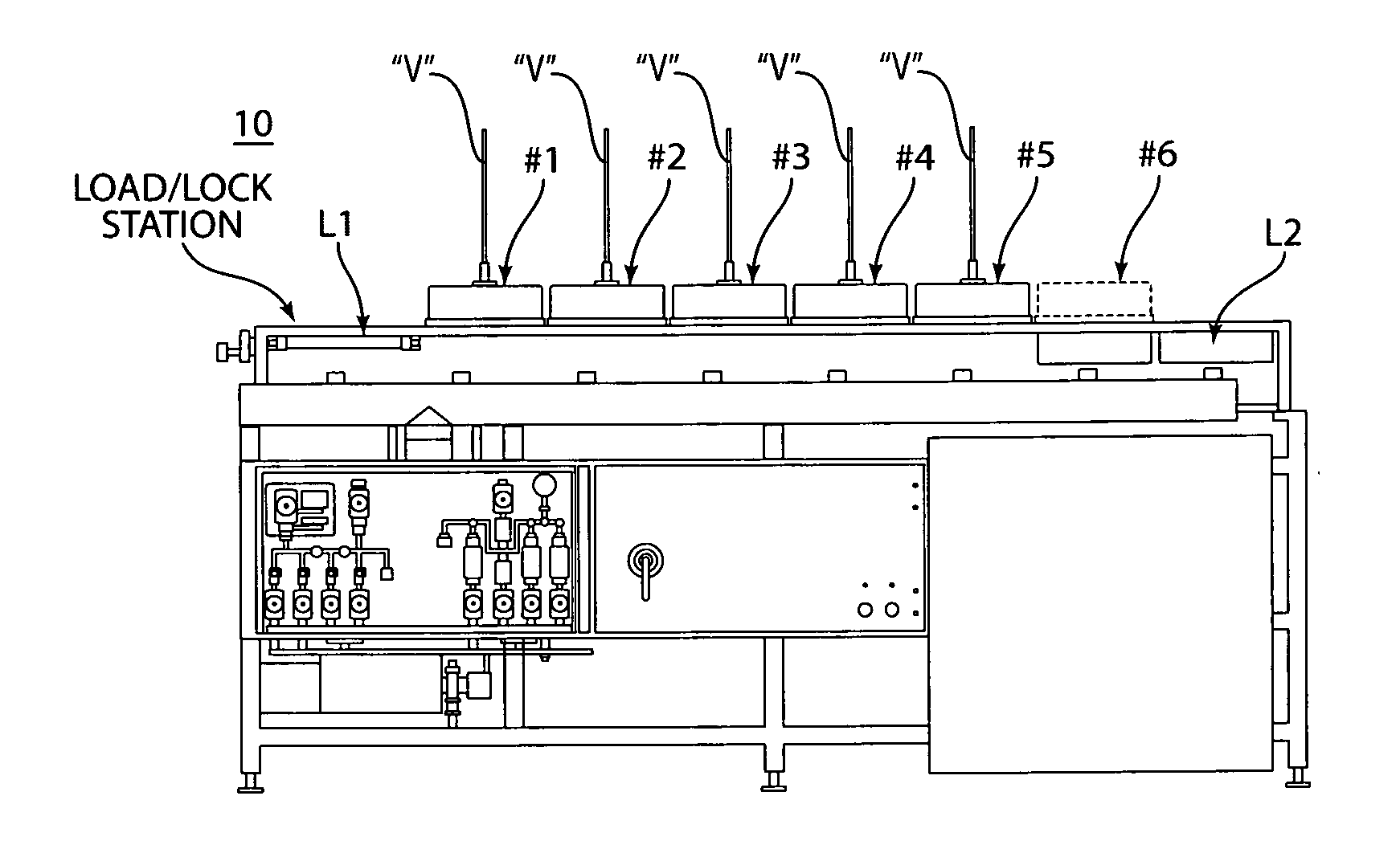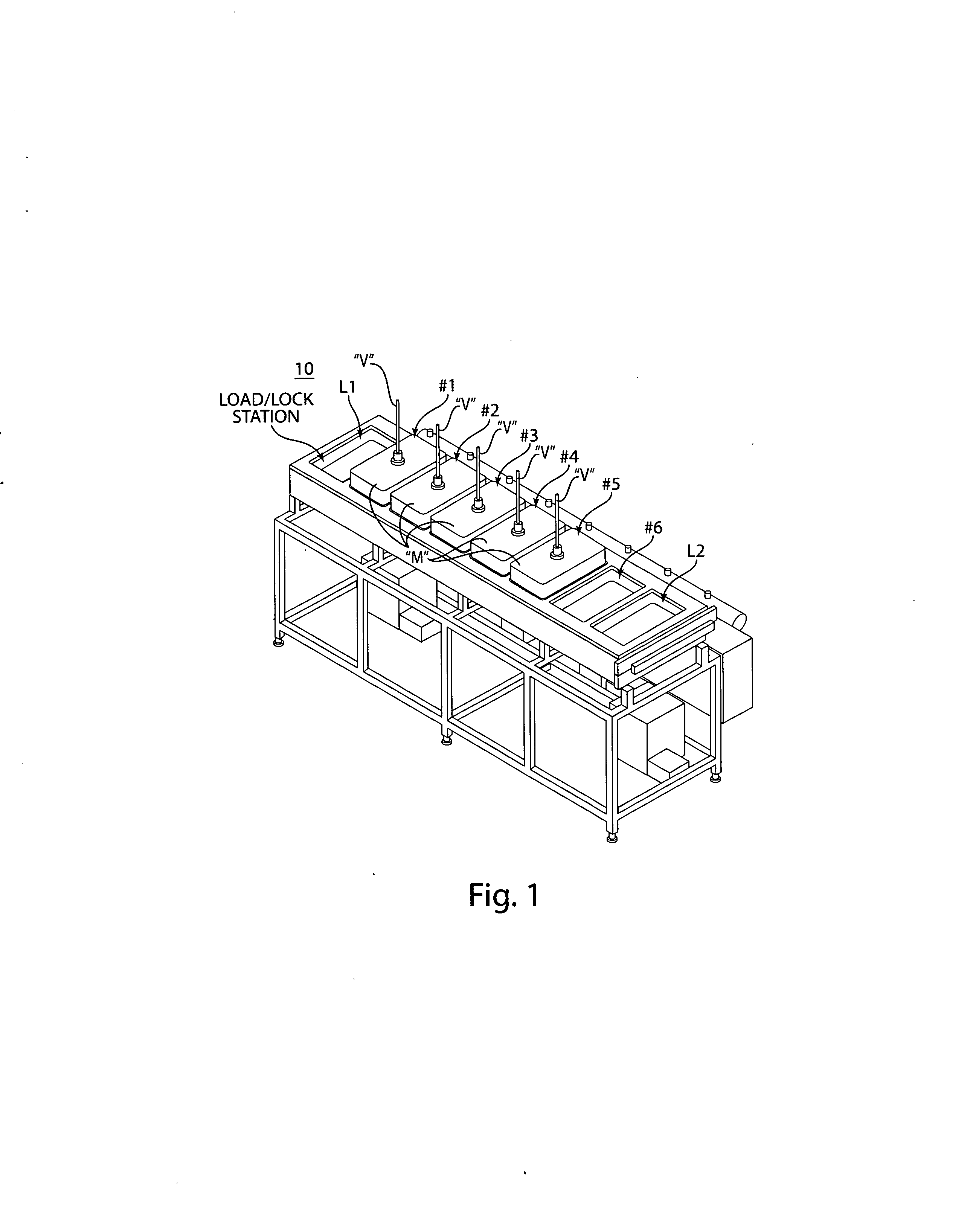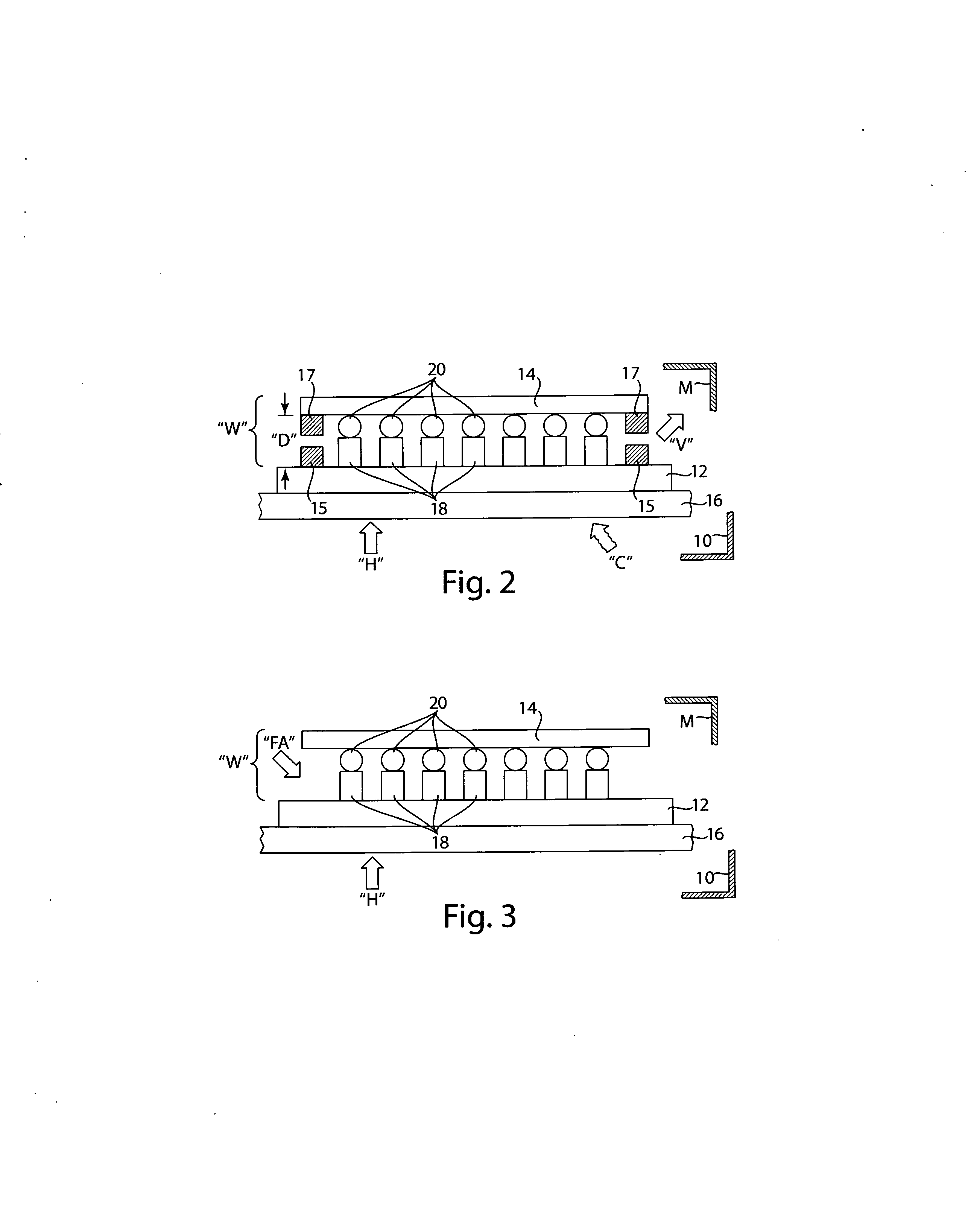Serial thermal linear processor arrangement
a linear processor and linear technology, applied in the field of electrical components, can solve the problems of reducing the reliability of the device produced, the flux cannot be completely cleaned between the die and the substrate, and the mechanical system for delivering the chemical is easy and controllable, and the system requirements are much higher
- Summary
- Abstract
- Description
- Claims
- Application Information
AI Technical Summary
Benefits of technology
Problems solved by technology
Method used
Image
Examples
Embodiment Construction
[0048]The invention comprises an electronic chip made by a chip manufacturing process which comprises a stepwise and linearly arranged, serial thermal processing station arrangement 10 using a method for serially treating a pre-assembled chip or die and a substrate assembly “W” through a series of at least six independent, enclosed station chambers and an initial load / lock chamber and a final unload / lock chamber, in the processor arrangement 10, as represented in FIG. 1.
[0049]The linear production station arrangement 10 represented in FIG. 1 is arranged to stepwise present a material to be treated, such as a semiconductor substrate assembly, at a series of linearly aligned, spaced-apart locations, from an initial Load / Lock station to processing stations numbered herein, for example, numbers 1 through 6, which stations each are arranged to independently control the temperature, pressure and atmosphere thereat, as is similarly represented in various aspects and embodiments of the arra...
PUM
| Property | Measurement | Unit |
|---|---|---|
| pressure | aaaaa | aaaaa |
| temperature | aaaaa | aaaaa |
| temperature | aaaaa | aaaaa |
Abstract
Description
Claims
Application Information
 Login to View More
Login to View More - R&D
- Intellectual Property
- Life Sciences
- Materials
- Tech Scout
- Unparalleled Data Quality
- Higher Quality Content
- 60% Fewer Hallucinations
Browse by: Latest US Patents, China's latest patents, Technical Efficacy Thesaurus, Application Domain, Technology Topic, Popular Technical Reports.
© 2025 PatSnap. All rights reserved.Legal|Privacy policy|Modern Slavery Act Transparency Statement|Sitemap|About US| Contact US: help@patsnap.com



